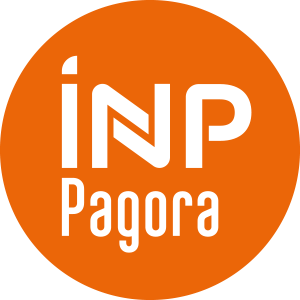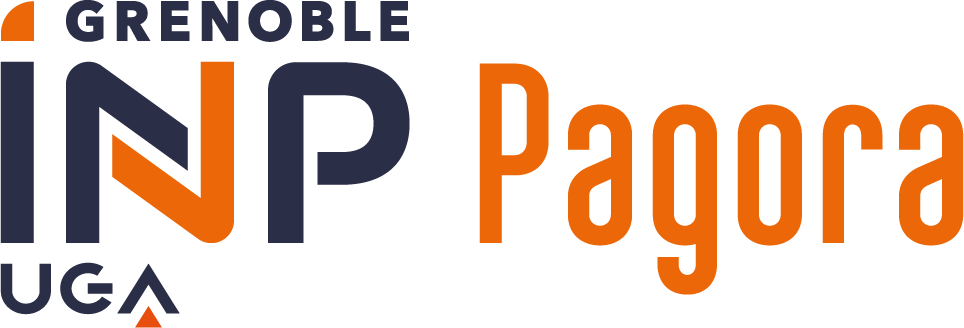Number of hours
- Lectures 25.5
- Projects -
- Tutorials -
- Internship -
- Laboratory works -
ECTS
ECTS 25.0
Goal(s)
Learning outcomes :
- To know the manufacturing additives used in the paper process.
- To understand the modes of action of these additives.
- To know their point of introduction and the most commonly used dosages.
- To check the effectiveness of these additives.
- To know the basics of microbiology: prokaryotic cells (structure, function, nutrition, growth)
- To know the modes of action of biocides and the approaches to implementation in the context of an anti-slime treatment
- To know the key points of the Biocide regulations
Evelyne MAURET
Content(s)
This course focuses on :
- the different additives used such as wet-end chemicals in papermaking,
- the main modes of action of these additives and to be able to identify the main parameters acting on the involved phenomena
- their most common dosing points and the classical dosages
- how to control their efficiency
1. Introduction - why using performance and process additives in papermaking?
2. Composition of the pulp suspension: relevant properties of the cellulosic fibres and fines, of the mineral fillers and pigments and the dissolved and colloïdal substances.
3. Forces at interfaces: a brief survey
4. Characterisation of lignocellulosic materials: key parameters in controlling the papermaking chemistry
5. Performance additives : physico-chemical modification of fibres for improving end-use properties of paper and board
- Dry and wet strengthening
- Internal sizing
6. Process aids: a way to increase the productivity of the papermachine - Retention and drainage
- Interfering substances : how to control them?
7. Microbiology (A. Guillet)
Basic knowledge:
- of the main sorts of pulps and of the papermaking process,
- of the physical and mechanical properties of paper and board,
- in polymer chemistry and physical chemistry.
Accessibility for people with disabilities : please contact us for further information
- Specific credits: this course brings 1.5 ECTS to students in IFB - Spring exchange semester
Evaluation : Written exam (2h)
Resit : Written exam (2h)
Course and exam language adapted to the student profile.
Part 1 (80%) - Physico-chemistry of paper: written exam with written support - the student will write 1 to 3 double-sided pages summarizing the course - any other document is forbidden - calculator required (duration: 1h30)
Part 2 (20%) - Microbiology-biocides: no documents allowed during the exam (duration 30 minutes).
Exam can be retaken.
In case of evaluation in downgraded mode:
Part 1 - Physico-chemistry of paper: supervised homework will be replaced by homework. In this case, all documents made available to students will be authorized.
Part 2 - Microbiology-biocides: graded mode assessment: MCQs and/or course questions to be completed online.
The exam may be taken in french or in english
The course exists in the following branches:
- Curriculum - Pagora Engineer - Apprentice - Semester 8 (this course is given in english only)
- Curriculum - Pagora Engineer - Student - Semester 8 (this course is given in english only)
- Curriculum - International Semesters - Semester 8 (this course is given in english only)
Course ID : 4FMT1061
Course language(s): 
You can find this course among all other courses.
Environmental security
CM : RAS
TP : port de la blouse, de lunettes de sécurité, de gants et de chaussures fermées. Respect des conditions d'utilisation des produits chimiques (fourniture des fiches de données de sécurité)et des bonnes pratiques de laboratoire.
[1] Eklund, D., and Lindström, T., Paper Chemistry, DT PaperScience Publications, Grankulla, Finland, 1991.
[2] Scott, W.E., Principles of Wet End Chemistry, TAPPI Press, Atlanta, Georgia, USA, 1996.
[3] Roberts, J.C., The Chemistry of Paper, The Royal Society of Chemistry, Cambridge, UK, 1996..
[4] Neimo, L., Editor, Papermaking Chemistry, Fapet Oy, Helsinki, Finland, 1999..
[5] Scott, W.E., and Abott, J.C., Properties of paper: An Introduction, 2nd edition, TAPPI Press, Atlanta, Georgia, USA, 1995.
[6] Paulapuro, H., Paper and board grades, Fapet Oy, Helsinki, Finland, 2000 [co-edition with TAPPI, Atlanta, Ga.].
[7] Hubbe, M. (2006). Bonding between cellulosic fibers in the absence and presence of dry-strength agents: a review, Bioresources, 1(2), 281-318.
[8] Lindström, T., Wägberg, L., and Larsson, T. (2005). On the nature of joint strength in paper: A review of dry and wet strength resins used in paper manufacturing, Proceedings of the 13th Fundamental Research Symposium, Cambridge, 457-562.
[9] WAGBERG L., ANNERGREN G. Physicochemical characterization of papermaking fibres.
in The Fundamentals of papermaking materials, transactions of the 11th fundamental research symposium, Cambridge, 1997, p.-82.
[10] CHAN L.L. Wet-strength resins and their application. Atlanta : TAPPI Press, 1994.



